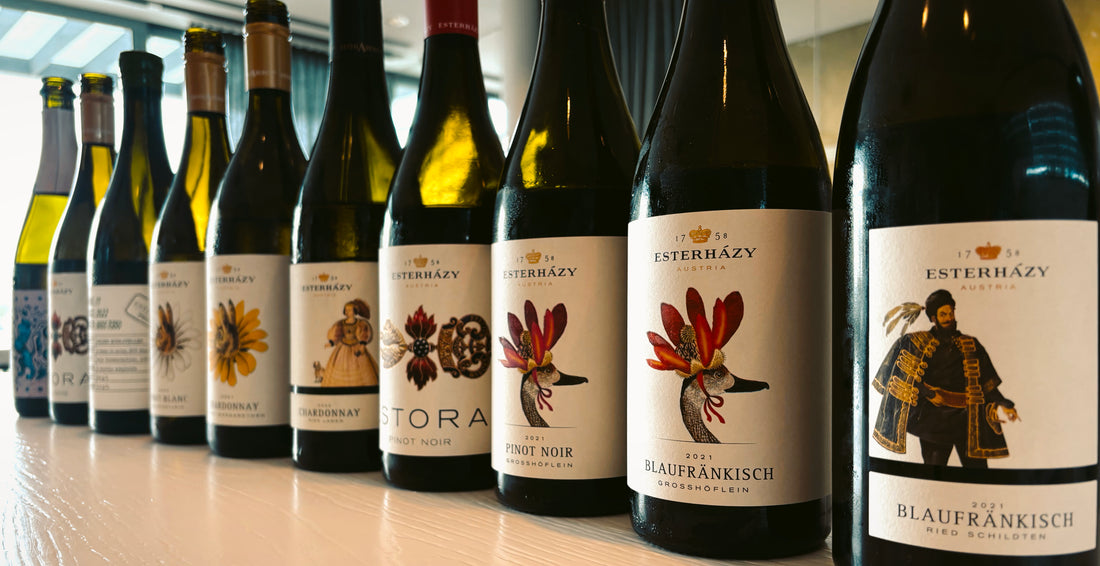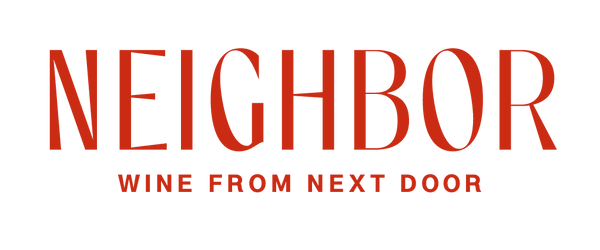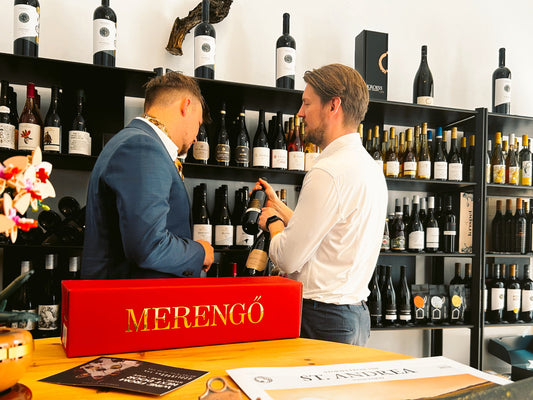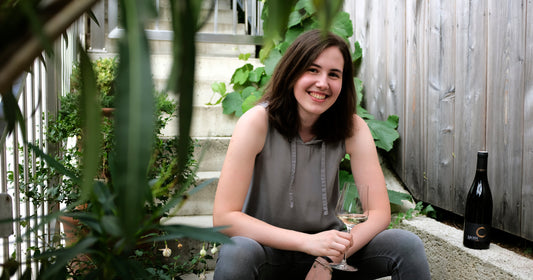
Just like coming home - Esterházy Estate
Share
When we started exploring Austrian wineries to add to our range, Esterházy was immediately one of our top choices. The name, also well-known in Hungary, instantly caught our attention. At VieVinum 2024, we had the chance to taste their wines, and we were deeply impressed. Eager to learn more, we set off for Eisenstadt, the home of the Esterházy family, after our morning visit to the Salzl winery. Nestled near Lake Neusiedl and even closer to the Leithaberg hills, the picturesque landscape provided the perfect backdrop for our visit.

Upon arrival, we were warmly welcomed with broad smiles, an informative tour, and, of course, delicious wines. Our host, Christian Trenk, was outstanding, impressing us with his perfect preparation and extensive knowledge. After a brief introduction to the local history and geography, we made our way to the production facility. Despite the modern surroundings, we found traces of the past everywhere, such as the masterfully carved barrel heads adorning the walls—relics that are hundreds of years old.

We followed the path of the grapes and witnessed the hustle and bustle as the harvest had started earlier this year due to weather conditions. Hand-harvested grapes are placed in crates, then into the destemmer, the press, and finally into the tanks. The head winemaker, Robert Krammer, experiments with various storage tanks. In addition to steel tanks and wooden containers, Robert loves working with different methods.

The winery is particularly proud of its three giant egg-shaped concrete tanks. Additionally, there are clay, ceramic, and granite amphoras, as well as barrels in various sizes and shapes, leading to the development of a new product category: the project wines. The unique aspect of the barrels is that the wood used to make them comes from their own forest next to the vineyards. Every drop of these wines embodies the terroir of the Leithaberg. The wines are also aged in barrels made of American, French, and Hungarian wood.

Christian showed us the typical soil types on which the vines grow. The Esterházy vineyards benefit from the region’s unique terroir, characterised by a mix of clay, limestone, slate, and sand. This diverse soil composition contributes to the complexity and richness of the wines. The proximity to Lake Neusiedl and the Leithaberg hills creates a microclimate that is ideal for viticulture—with warm days and cool nights that promote the slow ripening of the grapes, preserving their acidity and refining the flavour profiles.
Then came the highlight: a tasting of 10 wines. Among them were wines we’ve already added to our range, as well as some we are still considering. Two wines left a particularly strong impression on me. The Grosshöflein Pinot Blanc Leithaberg DAC is a beautifully balanced wine with notes of green apple, pear, and a hint of citrus.
These flavours are supported by a subtle minerality that perfectly reflects its Leithaberg origins. The 2021 Ried Schildten – Blaufränkisch DAC, on the other hand, is a powerful red wine with rich aromas of dark berries, a delicate spice note, and a soft, velvety finish. Both wines left a lasting impression and embody the quality of the Esterházy winery.

After the tasting and the tour of the winery, we made a stop at Esterházy Palace, where winemaking originally began before it was moved to its current location. There, we immersed ourselves in the fascinating history of the Esterházy family, adding a cultural dimension to our experience. We left Eisenstadt full of joy and enthusiasm, ready to share these extraordinary wines with fellow wine lovers. The visit was a truly unforgettable experience, combining history, culture, and exceptional wine in a unique way.









